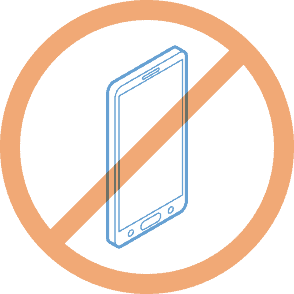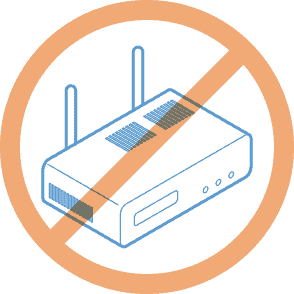Satellite Internet in the USA
Providers Offering Satellite Service
We've found 4 providers offering Satellite service in the US. Below are stats on their coverage and speeds.
| HughesNet | 330,449,668 | 53 | 25 mbps |
| Viasat Internet | 326,965,502 | 51 | 150 mbps |
| X2nSat | 0 | 7 | 0 mbps |
| Starlink | 0 | 0 | 0 mbps |
Satellite Internet In the United States
For residents in rural areas of the United States, satellite internet can be a viable alternative to mobile or DSL Internet service.
Even though there are still a number of limitations to satellite technology, newly launched satellites by Hughesnet and ViaSat are capable of offering speeds up to 25+ Mbps. Both companies are promising speeds up to 100 Mbps in coming years.
While these speeds can’t compete with fiber or cable, they can be a good alternative to fixed wireless or dial-up Internet. However, Satellite Internet usually comes with extremely low data caps and high latency, making it a poor choice for “cord cutters” and techies.
Should You get Satellite Internet?
If you live in an area where you don’t have access to a good wired provider (such as DSL, cable, or fiber), satellite internet can be a great alternative to dial-up or mobile hotspots.
That said, we recommend also searching to see if there are any fixed wireless providers in your area. Fixed wireless commonly offers faster speeds and lower latency and data caps compared to satellite.
Benefits of Satellite Internet
Large Coverage Area
The key benefit of satellite technology is that customers who live in rural or underserved areas now have a viable solution for fast broadband access.
Get The Internet Speed You Pay For
While satellite broadband isn’t one of the “cheapest” technologies to get internet access, you do get what you pay for.
In 2013, the FCC reported that during peak usage periods, 90% of satellite internet users received 140% or more of the advertised speeds they were paying for.
Limitations
Distance
While satellite internet is a “space age” technology because of the distance data must travel, from earth to space and back again, internet connection via satellites have at least twice as slow average page load speeds for 12mbps plans when compared to connection speeds of DSL, cable, and fiber-optic Internet providers.
Latency
While many users experience satellite internet as “slow,” what they are really experiencing the latency of their connection.
According to the FCC satellite internet has the highest latency across all technology types, with an average of 628ms across all providers. This is almost 10 times slower than typical wired connections.
If you aren’t familiar, latency is a key factor contributing to a “fast” connection. Because data with satellite providers is transmitted over extremely large distances (over 22,230 miles in the newest technologies) users experience a significant delay between their request and the page loading as compared with DSL, Cable, or Fiber, which transmit data terrestrially using submarine fiber cables.
Satellite Internet’s high latency may be trouble some for online applications such as VoIP or Skype which require low latency. However, the increase in transfer rate (Mbps) is still a large improvement over dial-up alternatives.
Line of Sight & Weather Conditions
Because of the infrastructure requirements of satellite internet, the equipment mounted at the consumer’s property must have a line-of-sight connection with the provider’s network.
This means that some customers who live in mountainous or heavily wooded areas won’t be able to received access, due to blocking of the satellite dish by mountains or trees.
Additionally, this line-of-site requirement leaves connections vulnerable to weather conditions such as rain or snow.
Timeline of Major Satellite Internet Technological Developments
-
December 1993
FCC Opens Ka-band for commercial applications
As a response to Hughes Aircraft Co’s request, the Federal Communication Commission cleared the Ka-band for commercial satellite applications in December of 1993, right as the internet was experiencing a sort of revolution of access. This call for more consumer applications was answered by more than 15 companies, who at the time viewed satellite internet as the future of personal connectivity.
-
May 5th, 1997
Iridium satellite launch
Seen as one of the first major (technical) satellite network success stories, the Iridium network began to provide service to users in 1998. Though it was a feat of modern engineering, the market demand ultimately proved to be too little relative to the cost of operating such an array, and Iridium was forced to file for bankruptcy (the largest of such cases in the US up till this point).
-
May 4th, 2007
Astra 1L satellite launch
Though Astra had been involved in various satellite projects since as early as 1988, the launch of the brand’s new Ku-band satellites raised the bar for throughput, allowing for up to 20 Mbps both ways (compared to the 0.01 Mbps possible with the Iridium network).
-
March 16th, 2017
HughesNet Gen 5 satellite launch
HughesNet’s Gen 5 satellite launch was a turning point for the company’s service offerings, bringing the first FCC-defined broadband-level speeds (25 Mbps download and 3 Mbps uploads) to its subscribers in Mid-2017.
-
June 1st, 2017
ViaSat-2 satellite launch
Following quickly on the heels of their main US competitor, Viasat launched their own broadband-capable satellite infrastructure in June of the same year. Though the company viewed this as a major step forward for their service lineup, initial plans were already announced for the ViaSat-3, which would deliver gigabit throughput potential. The ViaSat-3 launch is currently scheduled for early 2019.
-
Projected date: 2019
OneWeb launch
The OneWeb project is a proposed constellation of roughly 882 satellites positioned in circular low Earth orbit to provide up to 100 Mbps throughput speeds. Most of the initial capacity has already been sold, and the company plans to potentially double the amount of satellites in the network to begin operating as early as 2019.
-
Projected date: 2020
SpaceX Starlink launch
SpaceX is no stranger to highly technical moonshot projects, but even the company’s own President has called the massive constellation of 12,000 satellites one of the most challenging things it’s ever undertaken. When complete, the $10 billion operation is poised to provide low-cost broadband satellite internet access to millions, with a stated timeline beginning in 2020 for some parts of the elaborate network.
Pros and Cons of Satellite Internet
pros
- Available nationwide, even in remote areas
- More data for money than mobile hotspots
- Improved speeds since 2018
cons
- Low data caps
- Slow speed compared to cable
- Susceptible to weather interference
What is Satellite Internet?
Satellite Internet is a method of delivering Internet service by via satellite connection. This is accomplished by transmitting data from provider offices up to satellites in orbit, which then broadcast data to subscribers with reception dishes at their locations.
Though not as prolific as other mediums, consumer satellite internet has been around since the late 1990’s, and has improved by several orders of magnitude since then.
At this moment, most current satellite service offerings pale in comparison to other, wired alternatives in terms of both overall performance and reliability. This is beginning to change, but for the time being, satellite remains primarily viable for those who have little to no other options for getting online.
This has obviously made it an attractive option for millions of Americans residing in remote, rural communities where wired infrastructure has not been installed — primarily due to the lack of economic incentive to do so by for-profit cable corporations. This underserved market continues to be a test-bed for emerging technologies such as fixed wireless, as well as high-speed, low-Earth orbit satellite and other space-based projects.
Misconceptions about Satellite Internet

Satellite Internet is not mobile LTE
Satellite Internet is broadcast from satellites in space, while mobile LTE is distributed by cell phone towers distributed around cities and communities. The companies that provide mobile and satellite Internet are not the same.

Satellite Internet is not WiFi
Wifi is the term for wireless service on high frequencies inside households. Satellite Internet transmits wirelessly on lower frequency bands. Once a satellite Internet customer has received satellite data via their roof or yard dish, this is then transmitted to their house by a coaxial or ethernet cable and transmitted as WiFi from a router inside the home.
How Does Satellite Internet Work?
In simplified terms, a physical antenna (often mounted on the roof of a home or business) picks up a signal from a larger satellite positioned in geostationary orbit around 22,300 miles above the Earth’s equator. This means that the satellites are always in the same position relative to the ground, so they are strategically laid out to cover entire continental swaths of land.
Because of this wide-area approach, satellite internet is ideal for extremely remote locations, such as remote tropical islands or sparsely populated rural areas. Regardless of where service is sent to on the ground, the signal is a two-way communication from antenna to space and back again. Once communications are received, they are fed into a home or businesses router, which in turn connects individual devices to the web.
Most satellite systems operate on the Ku spectrum band, which is the same frequency (14000 to 14500 MHz) that police officers use for traffic radar. Though this has been a standard for many years, certain satellites can also operate on L-band, C-band, and Ka-band spectrum as well. Several companies are researching next-generation satellite technologies that take advantage of bands never before used in satellite technologies before, but as of now, none of these are operational beyond the prototyping stage.
The future of satellite internet
Though satellite internet lags behind terrestrial internet options today in terms of both speed and reliability, this is beginning to change with rapidly advancing telecommunications technology. As innovation and expansion begins to stall out amongst wired internet providers, more and more companies are starting to see potential in low Earth orbiting satellite arrays that could soon connect millions around the world with broadband-level speeds never before seen from a space-based connection.
In fact, companies like OneWeb, Boeing and SpaceX all have ongoing plans to launch more than 1000 physical satellites each over the next 5 years. The latter expects to see revenue amounts of up to $30 billion by 2025 based on this technology alone.
Many of these networks will also rely on inter-satellite laser communication to effectively create a space-based internet backbone, which could change the way we view the web in its entirety. Airline companies such as Delta and American have even begun implementing satellite internet options for passengers in an attempt to provide superior speeds on some of their flights, and this trend is only expected to continue as these technologies become more competitive.
The future this new breed of satellite array conveys is a bold and exciting one. As innovations in broadcast mediums and orbital technology continues to increase, it is likely that the satellite internet industry will see fundamental shifts in its structure, enabling new ways for people long cut off from broadband access to join the modern, connected world.
Largest Satellite Providers
-
Hughesnet
102.06% Coverage
-
Viasat Internet
100.98% Coverage
-
X2nSat
4.98% Coverage
-
Starlink
% Coverage
States with the most Satellite coverage
-
Connecticut
100.0% Coverage
-
Colorado
100.0% Coverage
-
California
100.0% Coverage
-
Arizona
100.0% Coverage
-
American Samoa
100.0% Coverage
-
Arkansas
100.0% Coverage
-
Alabama
100.0% Coverage
Satellite Providers: Availability by State
| Alabama | 5,024,279 | 100.0% | 3 Satellite Providers |
| Alaska | 733,391 | 100.0% | 3 Satellite Providers |
| Arizona | 7,151,502 | 100.0% | 3 Satellite Providers |
| Arkansas | 3,011,524 | 100.0% | 3 Satellite Providers |
| California | 39,538,223 | 100.0% | 3 Satellite Providers |
| Colorado | 5,773,714 | 100.0% | 3 Satellite Providers |
| Connecticut | 3,605,944 | 100.0% | 3 Satellite Providers |
| Delaware | 989,948 | 100.0% | 3 Satellite Providers |
| District of Columbia | 689,545 | 100.0% | 3 Satellite Providers |
| Florida | 21,538,187 | 100.0% | 3 Satellite Providers |
| Georgia | 10,711,908 | 100.0% | 3 Satellite Providers |
| Hawaii | 1,455,271 | 100.0% | 3 Satellite Providers |
| Idaho | 1,839,106 | 100.0% | 3 Satellite Providers |
| Illinois | 12,812,508 | 100.0% | 3 Satellite Providers |
| Indiana | 6,785,528 | 100.0% | 3 Satellite Providers |
| Iowa | 3,190,369 | 100.0% | 3 Satellite Providers |
| Kansas | 2,937,880 | 100.0% | 3 Satellite Providers |
| Kentucky | 4,505,836 | 100.0% | 3 Satellite Providers |
| Louisiana | 4,657,757 | 100.0% | 3 Satellite Providers |
| Maine | 1,362,359 | 100.0% | 3 Satellite Providers |
| Maryland | 6,177,224 | 100.0% | 3 Satellite Providers |
| Massachusetts | 7,029,917 | 100.0% | 3 Satellite Providers |
| Michigan | 10,077,331 | 100.0% | 3 Satellite Providers |
| Minnesota | 5,706,494 | 100.0% | 3 Satellite Providers |
| Mississippi | 2,961,279 | 100.0% | 3 Satellite Providers |
| Missouri | 6,154,913 | 100.0% | 3 Satellite Providers |
| Montana | 1,084,225 | 100.0% | 3 Satellite Providers |
| Nebraska | 1,961,504 | 100.0% | 3 Satellite Providers |
| Nevada | 3,104,614 | 100.0% | 3 Satellite Providers |
| New Hampshire | 1,377,529 | 100.0% | 3 Satellite Providers |
| New Jersey | 9,288,994 | 100.0% | 3 Satellite Providers |
| New Mexico | 2,117,522 | 100.0% | 3 Satellite Providers |
| New York | 20,201,249 | 100.0% | 3 Satellite Providers |
| North Carolina | 10,439,388 | 100.0% | 3 Satellite Providers |
| North Dakota | 779,094 | 100.0% | 3 Satellite Providers |
| Ohio | 11,799,448 | 100.0% | 3 Satellite Providers |
| Oklahoma | 3,959,353 | 100.0% | 3 Satellite Providers |
| Oregon | 4,237,256 | 100.0% | 3 Satellite Providers |
| Pennsylvania | 13,002,700 | 100.0% | 3 Satellite Providers |
| Rhode Island | 1,097,379 | 100.0% | 3 Satellite Providers |
| South Carolina | 5,118,425 | 100.0% | 3 Satellite Providers |
| South Dakota | 886,667 | 100.0% | 3 Satellite Providers |
| Tennessee | 6,910,840 | 100.0% | 3 Satellite Providers |
| Texas | 29,145,505 | 100.0% | 3 Satellite Providers |
| Utah | 3,271,616 | 100.0% | 3 Satellite Providers |
| Vermont | 643,077 | 100.0% | 3 Satellite Providers |
| Virginia | 8,631,393 | 100.0% | 3 Satellite Providers |
| Washington | 7,705,281 | 100.0% | 3 Satellite Providers |
| West Virginia | 1,793,716 | 100.0% | 3 Satellite Providers |
| Wisconsin | 5,893,718 | 100.0% | 3 Satellite Providers |
| Wyoming | 576,851 | 100.0% | 3 Satellite Providers |
Are you a journalist or researcher writing about this topic?
Contact us and we'll connect you with a broadband market expert on our team who can provide insights and data to support your work.
